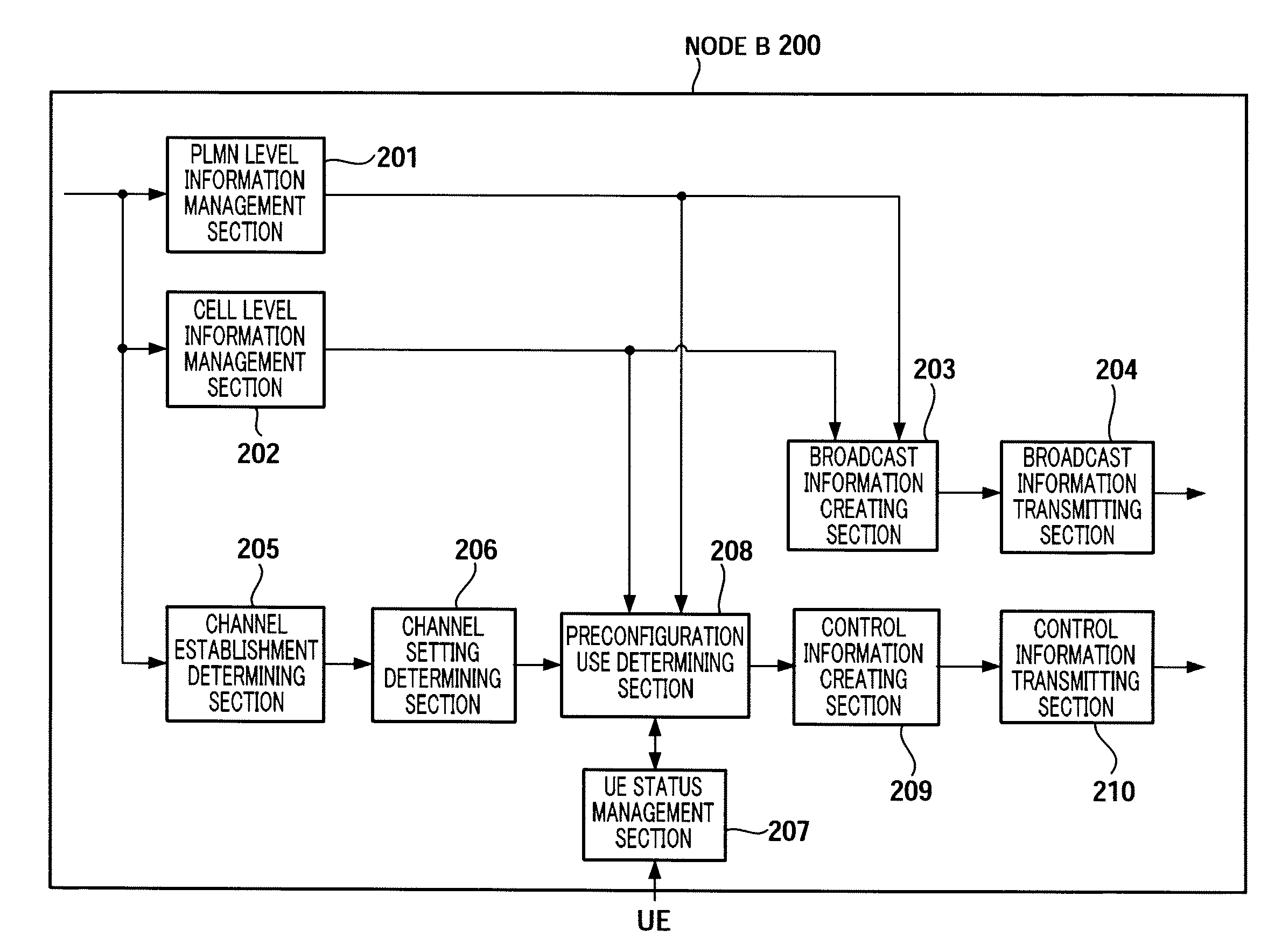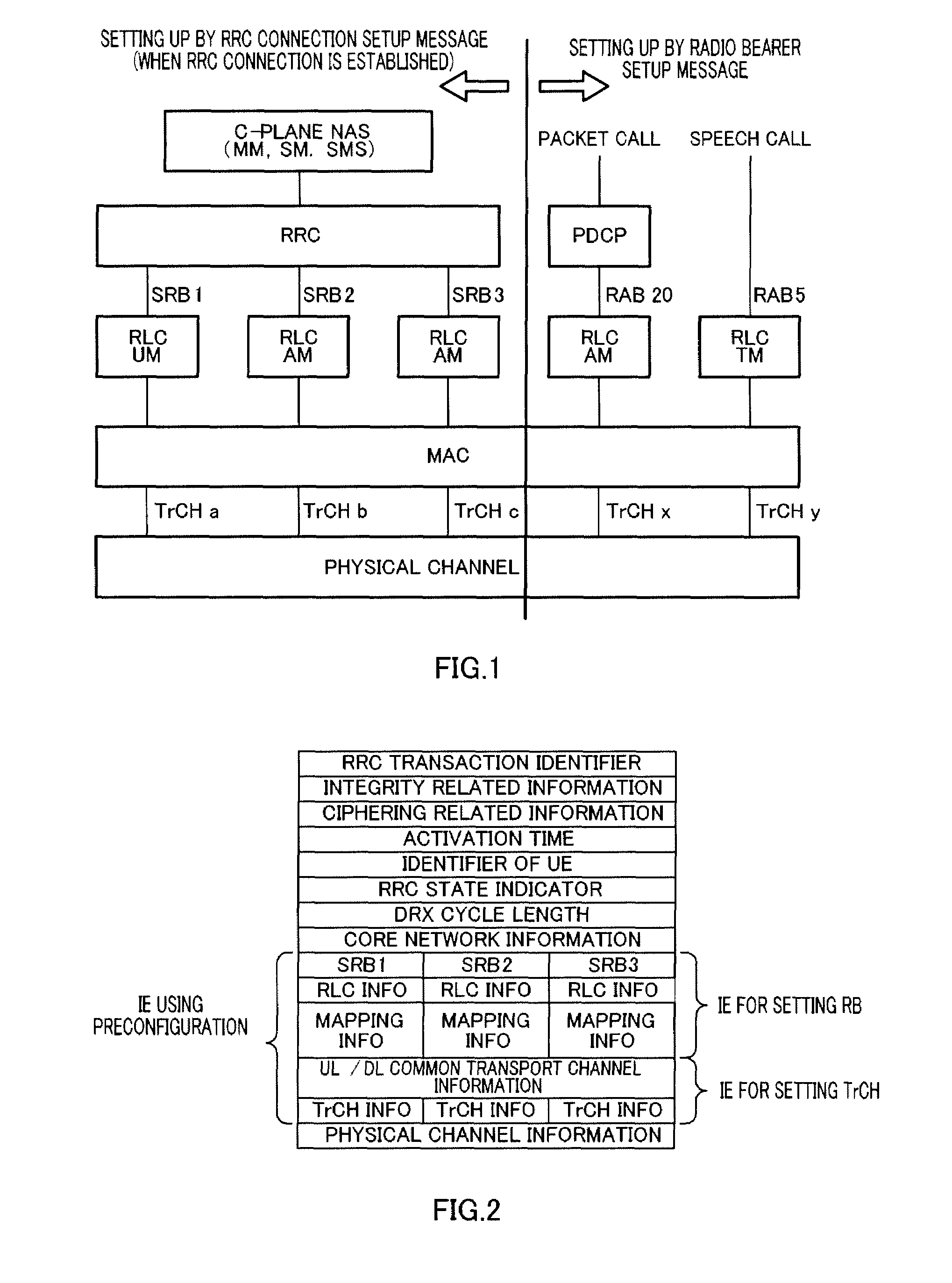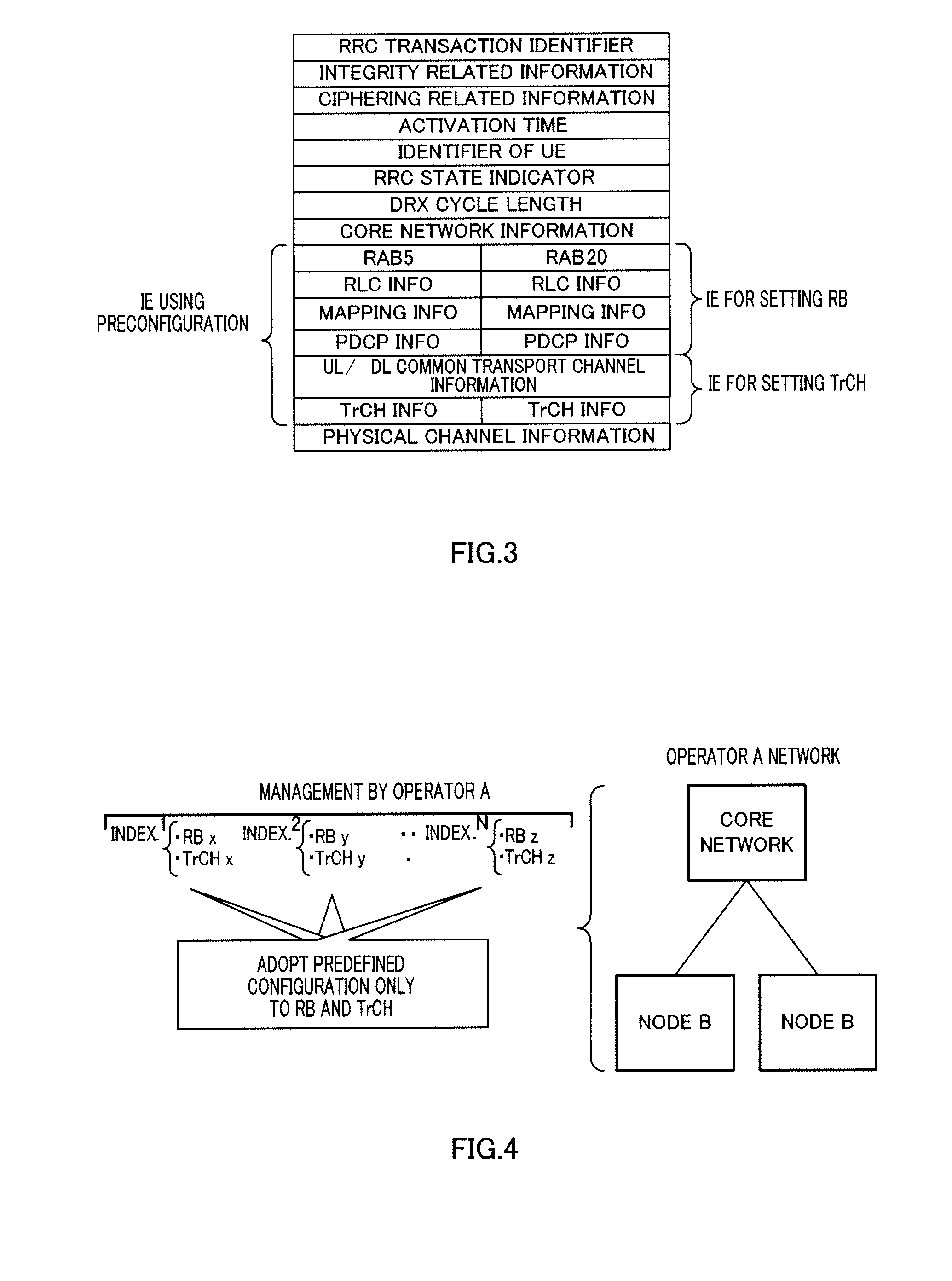Radio communication base station device
a radio communication and base station technology, applied in the direction of substation equipment, electrical equipment, wireless commuication services, etc., can solve the problems of wasteful use of radio resources, inability to perform operator-specific or ue-specific settings, etc., and achieve the effect of reducing the size of messages in call connection
- Summary
- Abstract
- Description
- Claims
- Application Information
AI Technical Summary
Benefits of technology
Problems solved by technology
Method used
Image
Examples
embodiment 1
[0062]First, general call connection steps between the radio communication terminal apparatus (“UE,” standing for user equipment) and the radio communication base station apparatus (“node B”) will be explained using FIG. 5. In ST101 in FIG. 5, the UE transmits an RRC connection request message to the node B, and, in ST102, the node B transmits an RRC connection setup message to the UE in response to the RRC connection request message and reports the UE identity, the channel setting for control information, and so on.
[0063]In STl03, the UE performs a channel setting on the UE side according to the details reported in the RRC connection setup message and transmits an RRC connection setup complete message to the node B to report completion of the setting.
[0064]RRC connection establishment is completed through these processing in ST101 to ST103. In this RRC connection establishment, signaling radio bearers (“SRBs”) RB1 (applying an RLC UM mode), RB2 (applying RLC AM for transmission of ...
embodiment 2
[0106]Although a case has been described with Embodiment 1 where the UE holds cell level information of one cell, Embodiment 2 of the present invention will describe a case where the UE holds cell level information of a plurality of cells, as shown in FIG. 19.
[0107]FIG. 20 is a block diagram showing the configuration of node B 500 according to Embodiment 2 of the present invention. FIG. 20 differs from FIG. 6 in adding neighboring cell status management section 501 and replacing preconfiguration use determining section 208 by preconfiguration use determining section 502.
[0108]In FIG. 20, neighboring cell status management section 501 acquires the status as to whether or not the UE holds the PLMN information and cell level information of neighboring cells from the UE, and manages the acquired status and ID of the UE. Further, upon receiving a UE status report request from preconfiguration use determining section 502, neighboring cell status management section 501 sends back the corre...
embodiment 4
[0134]Embodiment 4 of the present invention focuses on the fact that all data is transmitted in the shared channel in long term evolution (“LTE”), and will describe a case where a cell level is further divided into two types.
[0135]In Embodiment 1, the PLMN level network includes the QoS class, the channel radio access bearer identifier, information about PDCP (header compression), the ciphering or integrity setting, the logical channel setting, the setting / number of retransmissions / reception window size of outer ARQ, the method of sending information for retransmission, a parameter / DRX / DTX interval to implement a DRX / DTX, and the method of reporting a measurement result of the volume of traffic.
[0136]Further, the cell level network includes the available frequency band, the format / TTI / interleave length / coding rate of channel (which are finally determined by a scheduler and of which candidates may not be set up), the transmission method / transmission frequency / quality measurement unit...
PUM
 Login to View More
Login to View More Abstract
Description
Claims
Application Information
 Login to View More
Login to View More - R&D
- Intellectual Property
- Life Sciences
- Materials
- Tech Scout
- Unparalleled Data Quality
- Higher Quality Content
- 60% Fewer Hallucinations
Browse by: Latest US Patents, China's latest patents, Technical Efficacy Thesaurus, Application Domain, Technology Topic, Popular Technical Reports.
© 2025 PatSnap. All rights reserved.Legal|Privacy policy|Modern Slavery Act Transparency Statement|Sitemap|About US| Contact US: help@patsnap.com



